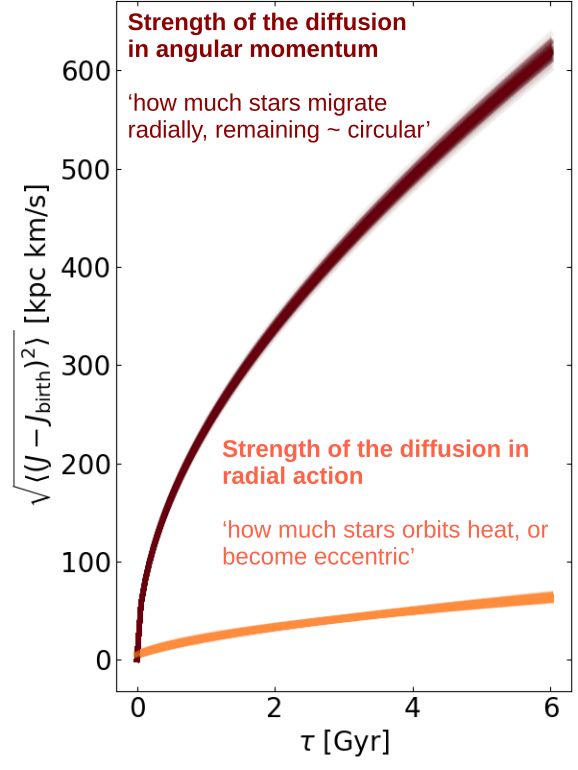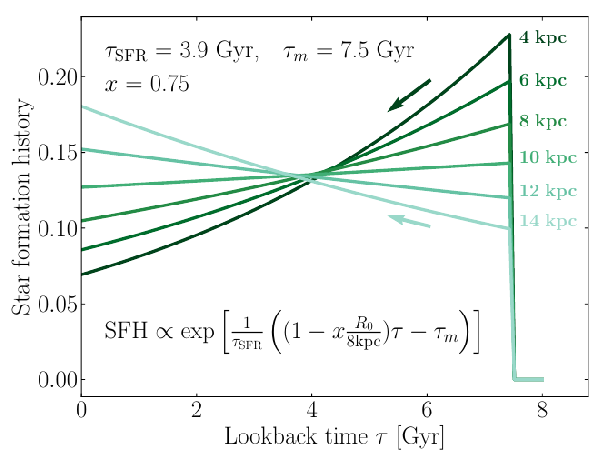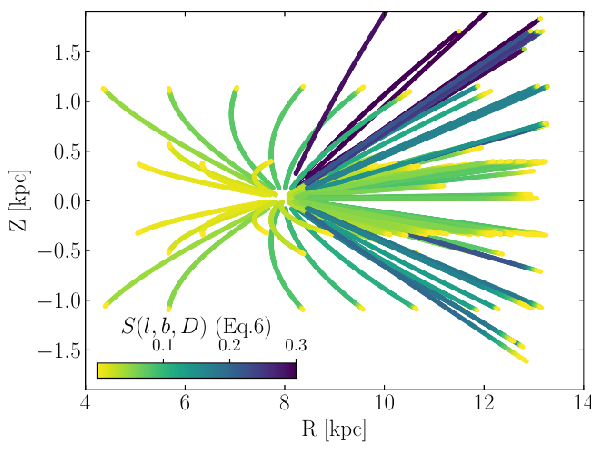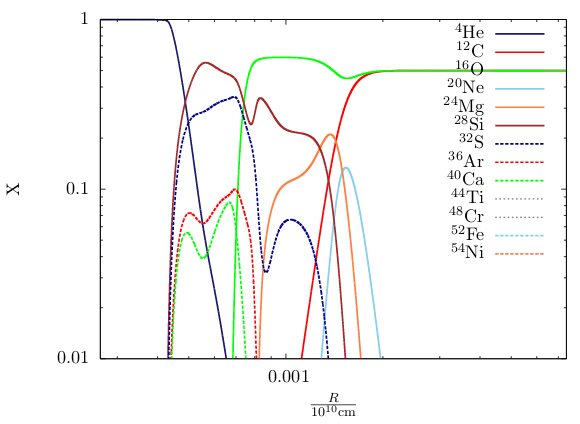Formation and Evolution of the Milky Way
Can we use the Milky Way as a model organism to tell how disk galaxies form and evolve? How much dynamical memory is lost to radial migration? Did the Milky Way disk grow from inside-out? How fast?

Bars in Simulations and in Observations
Bars in disk galaxies play an essential role, redistributing angular momentum in the disk and in the dark matter halo. The latter is thought to absorb the angular momentum of the bar and cause it to slow down. So far, cosmological simulations have produced bars that seemed to be too slow compared to observations, raising the question on whether the cosmological model used in the simulation is right. However, making apple-to-apple comparisons between observations and simulations is not straightforward: in observations, we only detect the brightest (ans so more massive) galaxies. We only see the strongest, longer bars. And these properties may correlate with bar pattern speeds, thereby biasing the comparisons with simulations. In this work, we showed that when making comparisons between the TNG50 cosmological simulation and MaNGA obsevations as fair as possible by matching the stellar mass and size distribution, the simulations and observations are very comparable. Bars have, on average, the same pattern speeds (see figure on the left). However, we also find that bars are on average shorter in the simulations than in the observations. Do the physical models in TNG50 need revision? Is this a numerical issue? Or do we miss short bars in observations? JWST has shown that previous obsevational results have missed a great number of bars, and so have observations of the local group galaxies (e.g. M33). However, it will still be important to address this question more quantitatively in the future to get the physics of galaxy formation and evoltuion right. See the analysis at Frankel et al. (2022).The Dynamics of Orbit Migration in Simulations
What drives the secular evolution of the Milky Way? Spiral arms are very efficient at redistributing the orbits of stars. But why do they keep stellar orbits near circular? One idea is that spiral arms are strong near the corotation resonance with the stars, where the torques they apply do not cause the stellar orbits to become eccentric. I am currently working on the NIHAO simulation (Buck et al. 2020) to relate the torques coming from the central bar and the flocculent spiral arms to radial migration as seen in the Milky Way (see post below). The animation on the right shows 4 rows, from top to bottom: surface density, potential, potential perturbations, and torques arising from the stars (left), the gas (middle), and their combined effect (right). How do stars react to these perturbations? How much dynamical memory do they retain of their birth conditions? Stay tuned..
Radial Orbit Migration is Cool
Looking at the present-day kinematics stars in the Milky Way disk, and making a model for formation and evolution of these stars orbits, it seems that most of the dynamical evolution of the Milky Way disk remained cold: orbits change size (or angular momentum), but remain close to circular, without increasing eccentricity much. This is illustrated on the Figure on the left, showing how angular momemtum and radial action spread as a function of time after birth. We see that angular momentum (dark brown) spreads about 10 times faster than the radial action (orange), which quantifies the amount of random radial motion (or 'hotness') in the orbits: the disk evolves a lot, but remains cold! It can have several implications if it also happens to other disk galaxies, driving the disks to look exponential, and to loose dynamical memory of their birth conditions. See the analysis in Frankel et al. (2020) and a very quick animation introducing radial migration there.Inside-out Growth of the Galactic Disk
Modelling the radial-dependent star formation history of the Galactic disk, and accounting for the effect of radial mixing (weakening age gradients), we fit the age-[Fe/H]-spatial distribution of APOGEE stars. The best fit model implies that the Milky Way disk likely grew from inside-out, of about 43% over the past 8 Gyr. This compares well to redshift-size relations seen in other disk galaxies. The best fit star formation history for the Milky Way's low-alpha disk is plotted on the right: the star formaton time-scale increases with radius.
MW disk stars: migrating 3 kpc scale?
Constructing a simple model for the Galactic disk, modelling when stars were born and with what metallicity, one can predict the scatter in the age-metallicity relation of disk stars that is resulting from radial orbit migration (modelled as a global diffusion process in Galactocentric radius). The inferred strength of radial orbit migration is quite strong, implying a migration scale of 3.5 kpc over the disk life time. The radial migration model is illustrated on the left, and the paper available in Frankel et al. (2018)APOGEE Selection Function
Galactic density fitting by star counts requires to know and understand how stars in one's data set were selected. APOGEE selection function is spatially complex, but opens the door to many interesting projects when included in such model. For the inside-out work described above, we have (only approximately and incompletely) approximated APOGEE selection function. It is available as a fits table with a detailed description here.

Nucleosynthesis in black hole accretion disks
Can accretion disks around black holes reach the extreme temperatures and densities needed for nuclear fusion to occur? In some particular cases of extremely high accretion rates involving unstable mass transfer, perhaps some elements can be synthetized and released in winds. An example of isotopes mass fractions profiles ina disk is illustrated here. I explored this question in a very simplified way (and not always correctly) during my MSc, the thesis is available here.